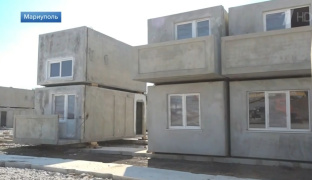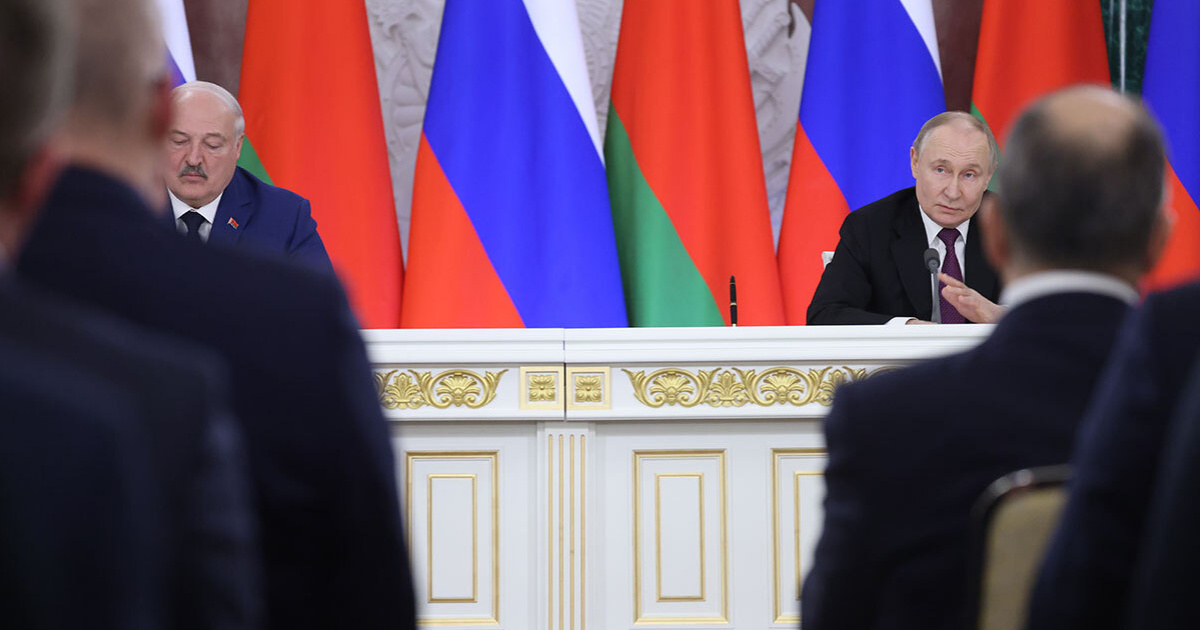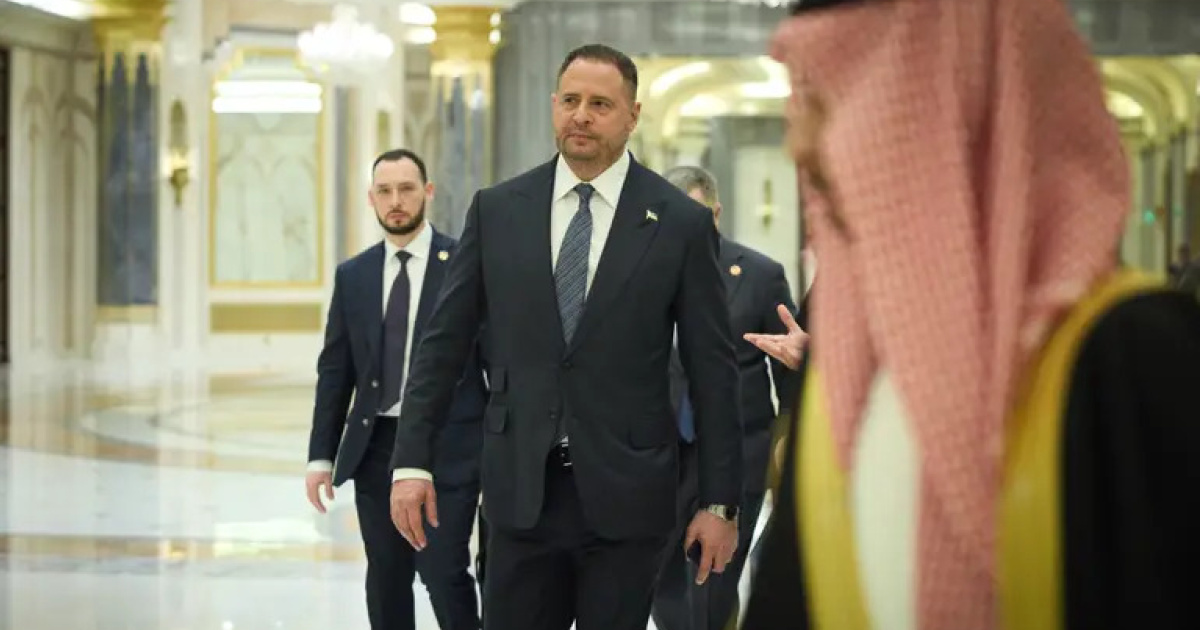
Forcing the topic of investments in the enterprises they destroyed in Ukrainian Donbas, the russian invaders and their accomplices from the local "elite" pursue two immediate goals. The first one is propagandistic.
By promising the arrival of "investors" from russia to the deserted factories and mines, representatives of the "DNR"/"LNR" attempt to create the illusion of a bright future. Their aim is also to prevent the remaining scanty population from migrating. This is crucial; otherwise, there would be no one left to plunder.
On the kremlin's side, discussions about investments in the "new regions" serve as a convenient smokescreen. It is intended to camouflage the occupiers' destruction of the industrial potential in what was once the most economically powerful region of Ukraine.
The second goal is purely practical. Numerous opportunities are present and being created for the embezzlement of funds from the federal budget. This is why the lack of tangible results, i.e., investments, doesn't bother anyone.
However, themed infodumps into the information space are made regularly. One of the recent ones is the application from the russian KAMAZ plant for the lease of the Maripol-based Azovmash association, destroyed by the occupiers.
"A coincidence? I don't think so"
The most "powerful" "investor" in the history of the "DNR"/"LNR" was the group Vneshtorgservice of the fugitive Kharkiv-based oligarch S. Kurchenko. Under his management from 2015 to 2021, metallurgical plants and mines came to an inevitable conclusion – a complete shutdown.
Inevitable because if you don't pay salaries to workers, don't settle with raw material suppliers, don't invest money even in repairs (let alone modernization) of existing equipment, there can be no other outcome.
It's not that the kremlin somehow miscalculated regarding the business talents of S. Kurchenko, entrusting him with the main sectors of the Donbas economy. It was a deliberate choice. They needed not a reviver but a liquidator.
The successor to Vneshtorgservice, former CEO of the corporation Svyazinvest E. Yurchenko (through his investment fund named after A. Popov, gained control over the company Southern Metallurgical Complex, which united metallurgical plants and mines seized from Ukrainian owners) does not fall into this category.
But, as previously noted by OstroV, he clearly falls short of being an anti-crisis manager. A characteristic episode: in 2018, E. Yurchenko lasted only six months in the position of deputy governor of Voronezh.
According to governor A. Gusev, as the deputy, E. Yurchenko was responsible for attracting investments to the Voronezh region. "But there was no significant influx of investments", - A. Gusev explained later, commenting on the dismissal of the future owner of the Southern Metallurgical Complex.
Therefore, once again, the choice of E. Yurchenko as the new "chief investor" was not a random mistake of the kremlin regime.
Equally indicative is the appointment (in July of last year) of the former vice president of the Uzhuralzoloto holding, E. Potapov, as the "overseer" of the Alchevsk Metallurgical Plant. There are plenty of details about this manager in open sources.
He once worked at Norilsk Nickel, one of the world's largest players. He left there in a scandal: shareholders accused him of "inflicting significant economic damage", manifested in suspicious cost increases and, consequently, a decline in the company's profitability.
By a random coincidence, a year after E. Potapov joined Uzhuralzoloto and was appointed as the non-executive director of the large gold mining company Petropavlovsk, this very Petropavlovsk ... went bankrupt.
Obviously, if the kremlin genuinely wanted to revive the industry in the occupied territories, they would appoint entirely different individuals to manage the enterprises. After all, it cannot be said that russia lacks competent and successful top managers.
But each time the choice is made in favor of either an outright liquidator or simply an unsuccessful person. As a well-known russian TV propagandist once said: "Coincidence? I don't think so".
Care for a discussion?
Before the russian occupation, the coal industry was the backbone of the Donbas economy. Now, most mines in the "DNR"/"LNR" are abandoned and flooded. Those that continue extraction (even in minimal amounts) can be counted on one hand. The main production unit is the Komsomolets Donbasu mine.
Nevertheless, back in December 2022, the then "Minister of Coal and Energy of the DNR", A. Chertkov, assured journalists that some "private investors" were already approaching the Donetsk mines.
"Unexpectedly, there are many willing not only to restore the mines but also to invest significant funds in their technical re-equipment", - he claimed. According to the "minister", "more than 10 specific proposals" had been received.
Later, in June 2023, at the St. Petersburg Economic Forum, the "head of the DNR", D. Pushilin, promised that some mines would be handed over to "investors" in the second half of the year, i.e., by the end of the previous year.
However, at the end of December, the chief engineer of the Shakhtarska Hlyboka mine, B. Rusanov, informed the media that beyond talks, no progress had been made. "Investors are interested in our mine, but there are no specifics yet; the matter is being worked on", - he said.
Any seasoned manager (whether a government official or a private company manager) would confirm that you can "work on the matter" indefinitely. In administrative slang, such a phrase means that the issue is shelved, and it's uncertain whether it will ever be taken out.
An interesting nuance: the "DNR government" estimates the investment needs for the coal industry at 12 billion rubles over 3 years, with 7 billion rubles expected from private investments. In general, this is quite manageable for major players.
For instance, the Yakutian company Kolmar invested 112.8 billion rubles in production from 2018-2023, averaging 18.8 billion rubles annually. However, as reported by russian media in December 2022, citing government sources, only small companies showed interest in the mines in the "DNR", and the required amounts were beyond their reach.
Certainly, for such purposes, an investment loan from a bank can be attracted. However, a year later, in late November 2023, the "Deputy Prime Minister of the DNR", V. Vasiliev, stated directly during a meeting in the Federation Council that "with current interest rates of 18%, and in reality, banks issue loans at 24%, investment (in enterprises in the occupied territories – ed.) is impossible".
This is even without considering the widespread mobilization of miners. It has led to a situation where now, an investor not only needs to bring significant funds to the mine but also has to bring their own workers from elsewhere, as there are no locals left.
The situation with metallurgy is the same as with the coal industry. D. Pushilin promised at the St. Petersburg Forum that the Ilich Mariupol Metallurgical Plant (MMP) would be restored by 2025.
In January of this year, the russian Fund for the Development of Territories announced that the corresponding project became the largest investment declaration in the free economic zone "Mariupol".
It involves investments amounting to 867.6 million rubles ($9.84 million at the current exchange rate) and will create over 1,500 jobs. Now, let's recall that before the major war, the plant employed 14,000 people (in 2020). The Ukrainian group Metinvest, which includes the enterprise, estimated the cost of its restoration at $15 billion. The construction period is 7 years, including 2-3 years just for clearing and preparing the site.
This is precisely the complete restoration of the plant, plus the transfer of some production lines from the completely destroyed Azovstal. Thus, the project announced by the Fund for the Development of Territories is merely the recreation of one of the workshops.
Plus, one must consider that there is a huge gap between the declaration and the implemented project, and no one (on the other side) is planning to cross it. This is evident from the comment of E. Yurchenko, who visited MMP in June 2022.

Yurchenko did not want to pose against the backdrop of the ruins of the Ilich plant

…while D. Pushilin did not hesitate
"Serious destruction in Mariupol requires a thorough assessment. With competent state management and attracting investors, the port and metallurgy will be restored. It all depends only on the speed and competence of carrying out these works, and for this, a thorough assessment is needed. This deep assessment, among other things, is what we intend to do", - said the owner of Southern Metallurgical Complex.
Essentially, he said the same thing as the chief engineer of Shakhtarska Hlyboka mine: "there are no specifics yet, the issue is being worked out". Just in other words.
It is entirely obvious that the aforementioned KAMAZ project at Azovmash falls into the same category as the "restoration of MMP". The authors of this misinformation clearly hope that none of the readers will incredulously ask themselves (there is no one else left): "Why does a plant that produces trucks need an enterprise that was engaged in the production of railway tanks and industrial cranes?" Indeed, railway tanks and trucks are quite different. Therefore, at most, it is about creating a small auto repair shop for KAMAZ trucks on the territory of MMP. Trucks that are used by the russian occupying army. This certainly will not be the "major KAMAZ project in Mariupol" as presented by the rrussian media.
Great opportunities
Lack of opportunities for real investment does not mean that there's nothing to be embezzled. As mentioned earlier, in the "DNR", they calculated that the first-priority "investments" in the mines require 12 billion rubles, with only 7 billion rubles coming from private capital.
The remaining 5 billion rubles, local "officials" want to receive from the state, i.e., from the federal budget. Well, probably, no one (Including the kremlin) doubts their ability to embezzle this amount.
But since "vassals" also need to somehow compensate for their "loyal service", it is quite possible that they will get this money. If, of course, they "behave well" and do not forget to share with the right people in moscow.
Not only Donetsk and Luhansk collaborators want money from the federal budget. The management of KAMAZ and other "investors" also want money from there.
In KAMAZ's message outlining the concept of an "industrial park" at Azovmash, it is stated that "government financing is needed for repair and restoration work".
Another "investor", the CEO of the russian company Khimtekh S. Vrublevsky, also speaks about the need for state participation. Khimtekh supposedly doesn't mind investing in the Stakhanov coking plant Luhansk Polymetals. But again, government support is needed.
It is worth noting that the fertile ground for future embezzlements of "government support" is already prepared. On November 28 of last year, the State Duma of the russian federation simplified the requirements for recipients of government support (including budget financing through specialized funds) in the "new regions".
According to the law (which amends the existing law "On Industrial Policy in the russian federation"), until January 1, 2028, confirmation of the creation of industrial parks in the occupied territories is not required.
That is, to take billions of rubles from the federal budget, someone just needs to come to the Fund for the Development of Territories and say, "I have an industrial park in Donetsk, give me money for its development".
And no one will even bother to check whether there is real production there or if the "industrial park" exists only on paper (as in the case of "projects" at MMP or Azovmash). Money will be given because now it's allowed.
But russian companies don't necessarily have to embezzle budget funds allocated for the development of the "new regions". They can simply use them to boost their own business. Extra "free" funds won't hurt.
The "scheme" is already being tested: at the end of November, a decision on government support was made for the "interregional cluster of Kuznetsk Basin and the DNR".
According to Donetsk media, this project received preferential credit for the production of priority products and subsidies for the costs of purchasing the initial batch of raw materials.
It should be clarified that the "cluster" includes the Kemerovo-based trading company TorgInvest, the Tomsk machinery plant Ilma, and the Yasynuvata machinery plant, which was barely surviving before the major war. Between 2014 and 2021, they produced only 25 tunneling machines compared to 65 in just 2013.
In other words, the Yasynuvata machinery plant cannot be a real partner for Ilma. The "trick" is that all production within the "cluster" is concentrated in Tomsk. They manufacture tunneling machines for Yakutian mines.
Thus, the touted "cluster" by propagandist media is actually a purely domestic russian business project. It has no connection to the occupied territory. The idle Yasynuvata machinery plant was needed by the owners of Ilma as an add-on to qualify for preferential credit and budget subsidies.
By Vitaliy Krymov, OstroV




